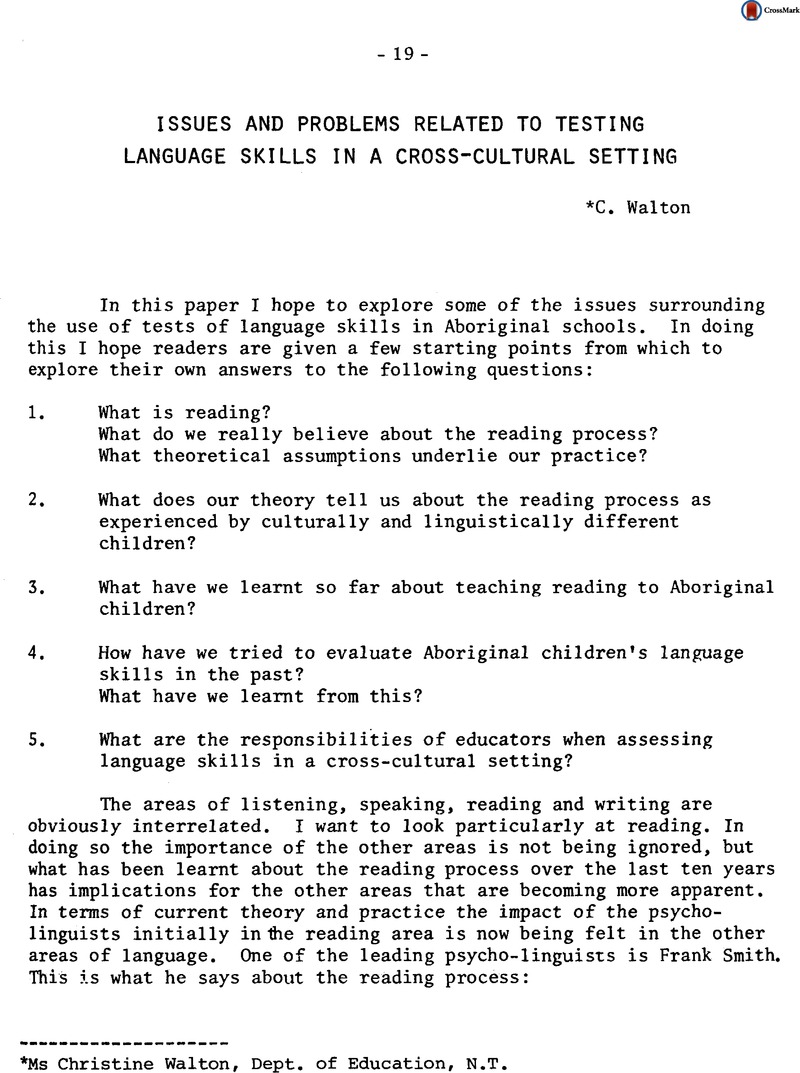Teasdale, G.R. and
de Vries, T.,
1976:
The use of the Illinois Test of Psycholinguistic Abilities with Aboriginal Australian children. In
Kearney, G.E. and
McElwain, D.W. (Eds):
Aboriginal Cognition: Retrospect and Prospect. Psychology Series No.1, Australian Institute of Aboriginal Studies,
Canberra.
Humanities Press Inc.,
New Jersey, U.S.A.
Google Scholar 